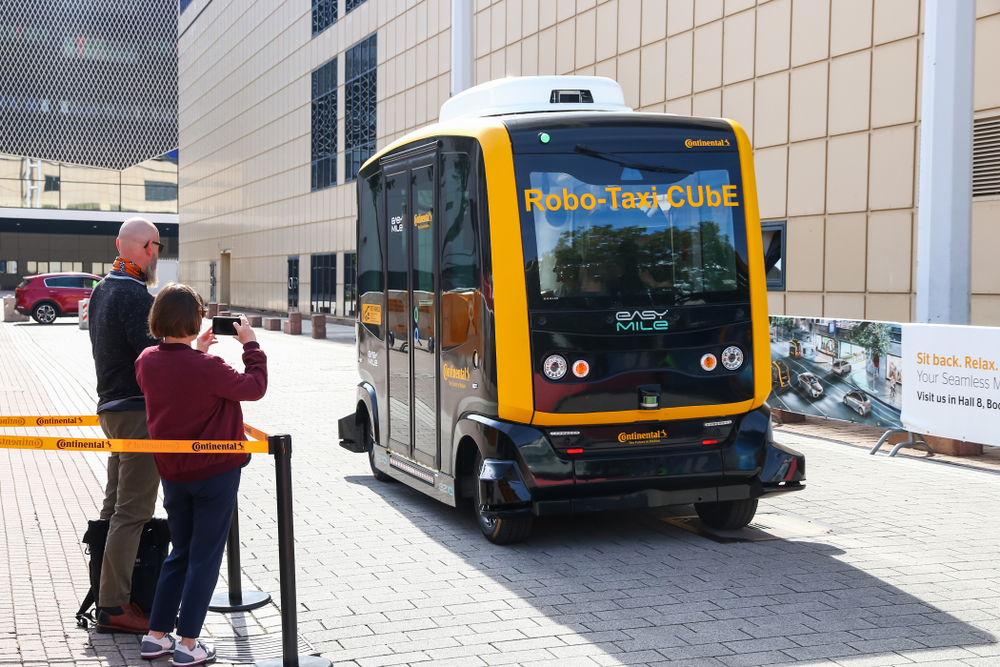In recent years, the automotive industry has witnessed a significant shift towards the development and implementation of autonomous vehicles, commonly referred to as robo-taxis. These self-driving cars are poised to revolutionize the way we travel, offering a glimpse into a future where transportation is safer, more efficient, and increasingly accessible. In this blog post, we will explore the rise of robo-taxis and examine how they are set to change the landscape of urban mobility.
1. Introduction to Robo Taxis:
Robo-taxis are autonomous vehicles equipped with advanced sensors, cameras, and artificial intelligence (AI) algorithms that enable them to navigate roads and transport passengers without the need for human intervention. Developed by leading technology companies and automotive manufacturers, these vehicles represent a significant advancement in transportation technology and have the potential to disrupt traditional modes of travel, such as taxis and ridesharing services.

2. Safety and Reliability:
One of the primary benefits of robo-taxis is their focus on safety and reliability. Unlike human drivers, autonomous vehicles are not susceptible to human error, fatigue, or distraction, making them inherently safer on the road. By leveraging real-time data and sophisticated algorithms, robo-taxis can anticipate and react to potential hazards more quickly and effectively than human drivers, reducing the risk of accidents and collisions.
3. Accessibility and Affordability:
Robo-taxis have the potential to make transportation more accessible and affordable for individuals across all demographics. By eliminating the need for human drivers, autonomous vehicles can operate 24/7, providing round-the-clock transportation services to passengers. Additionally, the use of robo-taxis in ridesharing networks can significantly reduce the cost of transportation, making it more affordable for individuals who may not have access to private vehicles or traditional taxi services.
4. Environmental Impact:
In addition to their safety and affordability benefits, robo-taxis also have the potential to reduce the environmental impact of transportation. By optimizing routes, reducing congestion, and promoting the use of electric and hybrid vehicles, autonomous taxi services can help decrease greenhouse gas emissions and mitigate air pollution in urban areas. As cities around the world grapple with the challenges of climate change and urbanization, robo-taxis offer a sustainable solution to the transportation needs of the future.
5. Challenges and Considerations:
Despite their promise, the widespread adoption of robo-taxis is not without its challenges. Technical hurdles, regulatory frameworks, and public acceptance are among the key factors that will influence the deployment and implementation of autonomous vehicles. Additionally, concerns related to data privacy, cybersecurity, and liability must be addressed to ensure the safe and responsible operation of robo-taxis on public roads.
6. The Future of Transportation:
As technology continues to evolve and autonomous driving technology advances, the future of transportation is increasingly looking autonomous. Robo-taxis represent a paradigm shift in how we perceive and interact with vehicles, offering a glimpse into a future where mobility is seamless, efficient, and sustainable. While there are still hurdles to overcome, the rise of robo-taxis signals a transformative era in transportation that has the potential to reshape cities and improve the lives of millions of people around the world.
7. Economic Implications:
The widespread adoption of robo-taxis is also expected to have significant economic implications, both positive and negative. On one hand, the increased efficiency and accessibility of transportation services could stimulate economic growth by reducing commuting times, lowering transportation costs, and improving productivity. On the other hand, the displacement of human drivers by autonomous vehicles could lead to job losses in the transportation sector, requiring governments and industries to implement policies and programs to support affected workers through retraining and job transition initiatives. Additionally, the shift towards autonomous vehicles may also create new opportunities for businesses and entrepreneurs in related industries, such as software development, data analytics, and urban planning, driving innovation and economic diversification in the process.

In conclusion, the rise of robo-taxis heralds a new era in transportation that promises to revolutionize the way we travel. With their focus on safety, accessibility, and sustainability, autonomous vehicles have the potential to transform urban mobility and address some of the most pressing challenges facing our cities today. As technology continues to advance and regulatory frameworks evolve, robo-taxis are poised to become an integral part of the transportation ecosystem, offering a safer, more efficient, and more sustainable way to get from A to B.

